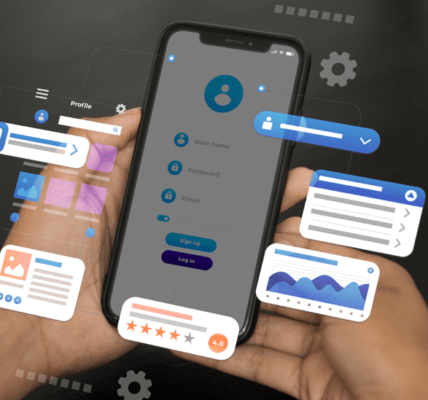In the ever-evolving digital landscape, businesses and developers alike are realizing the importance of User-Centered Design (UCD) in creating exceptional user interfaces (UI) and user experiences (UX). The driving force behind this approach is the understanding that the success of a product, application, or website is primarily determined by how well it meets the needs, preferences, and behaviors of its users. Therefore, placing the user at the center of the design process is essential for creating products that are not only functional but also intuitive, enjoyable, and engaging.
What is User-Centered Design?
User-Centered Design is a design philosophy and process that prioritizes the needs, preferences, and limitations of the end-user throughout every phase of a product’s development. In a UCD approach, designers and developers work closely with users to gather feedback, perform usability tests, and ensure that the final product is tailored to the user’s expectations. The UCD process typically involves the following stages:
- Research and Analysis – Understanding the target audience, their goals, pain points, and behavior patterns.
- Design – Creating initial prototypes and wireframes that reflect the insights gathered during the research phase.
- Testing – Conducting usability testing with real users to identify any challenges or issues with the design.
- Iteration – Using feedback from testing to refine and improve the design before launching the final product.
The goal of UCD is to create an interface that feels natural and intuitive to the user, allowing them to accomplish their tasks quickly and efficiently.
Why is User-Centered Design Important?
User-Centered Design is critical because it helps ensure that the final product is not only usable but also enjoyable and effective for the target audience. Here are several key reasons why UCD should be a cornerstone of UI/UX development:
1. Improves Usability and User Satisfaction
One of the primary objectives of UCD is to enhance usability. A user-friendly interface ensures that users can navigate the platform with ease, minimizing frustration and maximizing productivity. When a product is designed with the end-user in mind, it is more likely to be intuitive and functional, which directly impacts user satisfaction. For example, if a mobile app has a complicated navigation system or poor layout, users are likely to abandon it in favor of a more user-friendly option.
In contrast, when users feel comfortable using an interface, they are more likely to continue using it, recommend it to others, and become loyal customers. By placing a strong emphasis on user needs, UCD helps to ensure that users have a positive experience from start to finish, leading to higher levels of engagement and retention.
2. Reduces the Risk of Design Failures
Developing a product without considering user needs can lead to design failures. If designers fail to understand the pain points or expectations of the target audience, they may create a product that is difficult to use, confusing, or inefficient. For example, a website with complex navigation may confuse visitors, resulting in a high bounce rate and poor conversion rates.
User-Centered Design mitigates this risk by involving users throughout the development process. Through techniques such as user interviews, surveys, and usability testing, UCD helps designers identify potential issues before they become significant problems. This iterative approach ensures that designers make informed decisions that align with user expectations, leading to a more successful final product.
3. Enhances Accessibility
Accessibility is an essential aspect of UI/UX design, and UCD plays a critical role in ensuring that products are accessible to users with varying abilities. By considering accessibility from the outset, designers can create interfaces that are usable by individuals with disabilities, such as those with visual impairments, hearing loss, or motor difficulties. This can include features such as screen reader compatibility, keyboard navigation, and color contrast adjustments.
By focusing on the diverse needs of users, UCD helps ensure that products are inclusive, which not only benefits users with disabilities but also broadens the product’s reach. In fact, an accessible design is often more user-friendly for everyone, creating a more seamless and enjoyable experience for all users.
4. Drives Better Business Results
Investing in User-Centered Design can lead to substantial business benefits. When businesses create products that are easy to use, users are more likely to make purchases, complete tasks, and engage with the brand. For example, an e-commerce website that is well-designed and easy to navigate can significantly boost conversion rates, leading to more sales and revenue.
Additionally, businesses that prioritize UCD tend to build stronger relationships with their users. By responding to user feedback and continuously improving the product based on real-world usage, businesses can foster loyalty and trust among their customer base. This customer-centric approach not only improves user retention but also encourages word-of-mouth referrals, which are invaluable in today’s competitive market.
5. Supports Iterative Improvement
User-Centered Design emphasizes iteration, allowing designers to continuously improve the product over time. This iterative approach means that designers are not simply creating a product and then moving on, but rather refining and adjusting the design based on user feedback and performance metrics. By releasing prototypes or beta versions, designers can gather real-time insights and make adjustments as needed.
This iterative process leads to products that are more polished and refined, and it also allows designers to adapt to changing user needs or market conditions. In contrast, a design that is not centered around user feedback may stagnate, resulting in a product that fails to evolve and remain relevant.
How to Implement User-Centered Design in UI/UX Development
Implementing UCD in UI/UX development requires a commitment to understanding and addressing the needs of users. Here are some practical steps to integrate UCD into your design process:
- Conduct User Research: Start by gathering information about your target audience through surveys, interviews, and data analytics. Understand their goals, challenges, and behaviors to inform your design decisions.
- Create Personas: Develop user personas that represent different segments of your audience. These personas should reflect the needs, motivations, and pain points of real users.
- Design with Empathy: Approach design with empathy, putting yourself in the shoes of your users. Think about how they will interact with your interface and what will make their experience easier and more enjoyable.
- Test and Iterate: Conduct usability tests throughout the design process, gathering feedback from real users. Use this feedback to refine and improve the design in iterative cycles.
Conclusion
In UI/UX development, User-Centered Design is not just a trend but a necessary approach to building products that resonate with users. By prioritizing the needs, preferences, and behaviors of the target audience, businesses can create intuitive, accessible, and engaging products that lead to higher satisfaction and better business outcomes. Embracing UCD means acknowledging that the user’s experience is paramount and committing to designing with empathy, making it an invaluable strategy for success in today’s competitive digital world.





